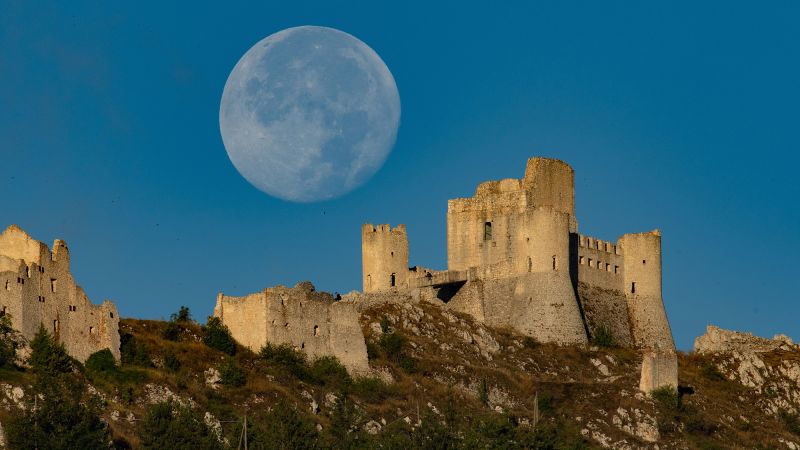Sky enthusiasts and casual observers alike will have an exciting opportunity this week to witness the grandeur of a full moon in its peak illumination. On Friday night, extending into the early hours of Saturday, August’s full moon—commonly referred to as the Sturgeon Moon—will reach its full form at approximately 3:55 AM Eastern Time on Saturday. This celestial event marks a significant moment in the lunar calendar, bridging both natural beauty and a sense of ancient tradition.
As highlighted by Kelsey Young, who leads lunar science objectives for NASA’s Artemis II mission, one of the most appealing aspects of the full moon is its visibility, even amidst the bright city lights. “Even in bustling urban areas, the full moon can be quite appreciated,” she remarked. However, for those seeking a more awe-inspiring view of the moon, it’s advisable to find a location away from the distracting glow of city lights. This not only enhances the visibility of the full moon but also amplifies the entire cosmic experience.
While the peak illumination occurs in the middle of the night, its radiance will remain for several days, allowing enthusiasts an extended window to view the full moon. Young mentioned that even at more conventional night hours, a breathtaking sight of the full moon could be observed, especially with minimal surrounding light interference. This phenomenon not only offers an opportunity for stargazers to connect with the cosmos but also brings attention to the historical significance of this particular full moon.
The Sturgeon Moon derives its name from its timing in August, which aligns with the seasonal abundance of sturgeon fish. This nomenclature is acknowledged by The Old Farmer’s Almanac, which serves as a historical reference for various lunar events. Various indigenous tribes also have distinct names for this full moon. For instance, the Cree tribe, primarily located in Canada, refer to it as the “Flying Up Moon,” symbolizing the period when young birds begin mastering flight. Meanwhile, the Assiniboine people, from the Northern Great Plains, call it the “Black Cherries Moon,” reflecting the ripening of cherries during this time.
Integrating celestial events, the full moon will coincide with three meteor showers: the Southern Delta Aquariids, the Alpha Capricornids, and the Perseids. While the first two showers recently peaked, the Perseid meteor shower is anticipated to peak in the coming week. Unfortunately, the brilliance of the full moon may overshadow these meteor showers, making their visibility less pronounced. Nonetheless, avid observers will also be able to marvel at planets such as Venus and Jupiter, which will be visible in the early morning skies throughout August. In particular, the two planets will create a captivating celestial assembly on Tuesday and Wednesday mornings, showcasing the beauty of our solar system.
In the latter part of the month, another planetary treat awaits as Mercury becomes visible beneath Venus on the horizon, while Mars can be spotted towards the western sky just after sunset. Looking ahead, sky-watchers can also anticipate four more full moons in 2025, with supermoons occurring in October, November, and December. Observing these will provide even more unique astronomical experiences.
Moving from full moons to eclipses, two notable astronomical events will also take place as summer approaches its end. A total lunar eclipse is set to grace the skies of Europe, Asia, Australia, Africa, parts of eastern South America, Alaska, and Antarctica on September 7 and 8. Such an eclipse occurs when the moon enters the Earth’s shadow, resulting in a dimming effect that can cause the moon to appear reddish—a phenomenon many refer to as a “blood moon,” due to the stunning hue it assumes.
Two weeks later, on September 21, a partial solar eclipse will be visible across parts of Australia, the Atlantic, the Pacific, and Antarctica. In the event of a partial solar eclipse, the moon will partially obscure the sun, creating a crescent shape akin to a bite taken from the sun’s brilliant disc.
To stay informed about these and other celestial phenomena, you can explore CNN’s Wonder Theory science newsletter, which provides fascinating updates on discoveries and advancements in our understanding of the universe. As the cosmos continues its intricate dances, there are ample opportunities for individuals to engage with the beauty that surrounds us in the night sky.












